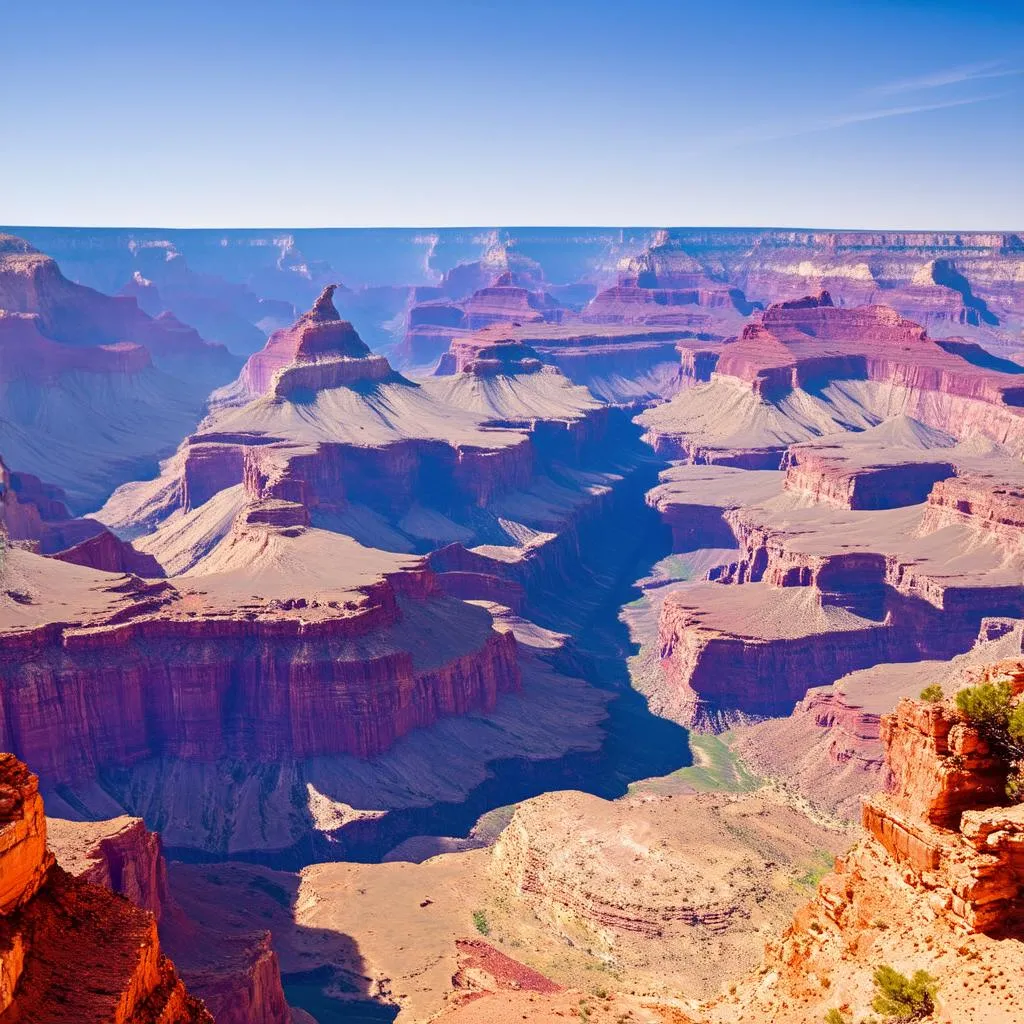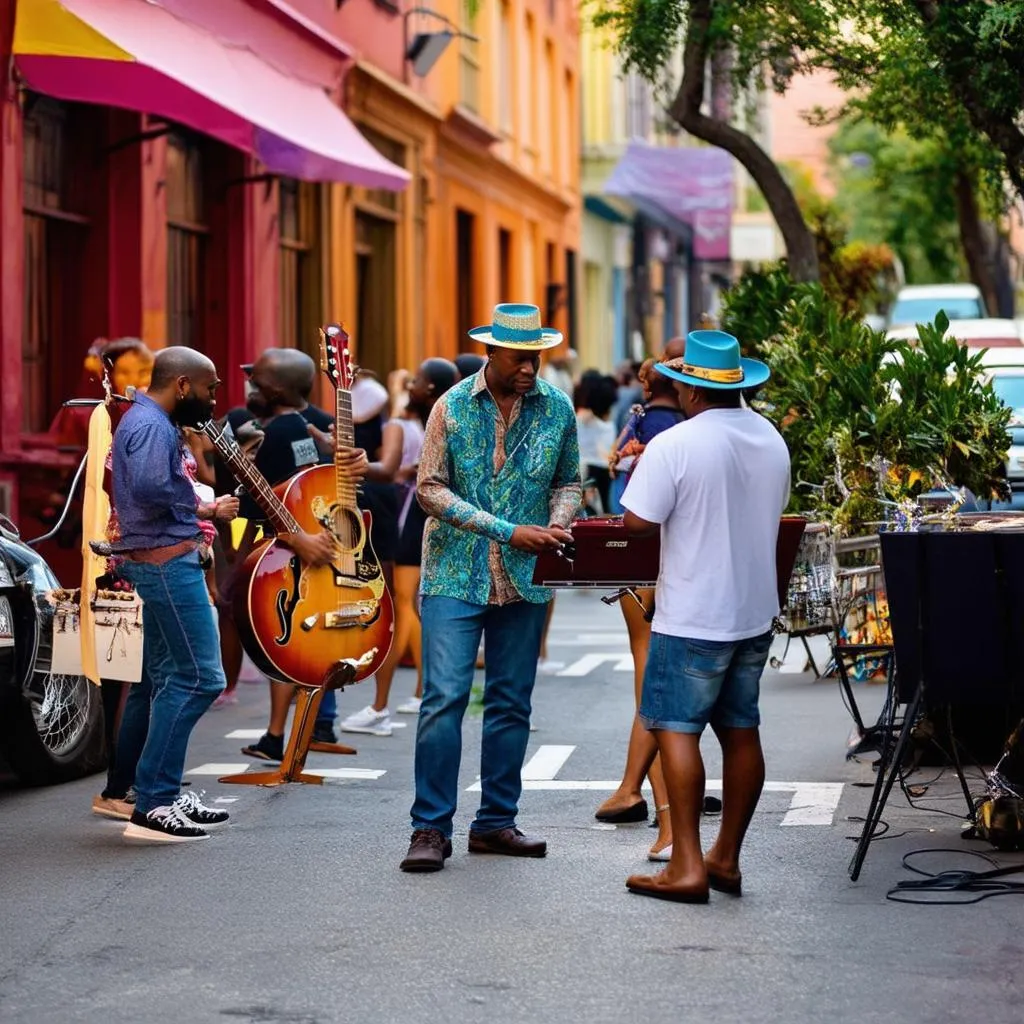Have you ever stood on the edge of the Grand Canyon and listened to the echoes rolling back? Or perhaps you’ve been captivated by a street musician’s melody in the heart of New Orleans? Sound, in its many forms, has a unique ability to transport us, evoke emotions, and even define our travel experiences. But have you ever stopped to think about how sound actually gets from point A to point B? It’s a fascinating journey involving invisible waves and a bit of scientific magic.
The Science Behind Sound: It’s All About Vibrations
Let’s break down the science – don’t worry, it’s more exciting than a physics lecture! Imagine yourself back in elementary school, playing with a slinky on the playground. When you flicked one end, a wave traveled down the slinky, right? Sound travels in a similar way, but instead of a slinky, it uses molecules.
Sound is created by vibrations. When something vibrates – like a guitar string, a car engine, or even your vocal cords – it causes the air molecules around it to vibrate too. These vibrations then travel outward, creating a chain reaction that eventually reaches our ears, where they are interpreted as sound.
Sound Waves: Riding the Frequency and Amplitude Express
These traveling vibrations are called sound waves. They move through the air (or other mediums) like ripples on a pond, carrying energy but not matter. The shape and size of these waves determine what we hear:
- Frequency: Imagine the waves on the slinky again. If the waves are close together, it means the vibration is fast, resulting in a high-pitched sound. If they’re further apart, the vibration is slower, and we hear a lower pitch. Think about the difference between a flute and a tuba – different frequencies in action!
- Amplitude: This refers to the strength of the vibration. The stronger the vibration, the higher the wave’s amplitude, and the louder the sound. A whisper has a low amplitude, while a rock concert will definitely have a high one.
The Medium Matters: From Air to Walls and Beyond
Sound waves don’t just travel through air; they can travel through various mediums, each affecting the sound in different ways.
- Air: This is the most common medium for sound to travel. Temperature and humidity can influence how fast and far sound travels through the air. Ever notice how sounds seem muffled on a foggy day? That’s because the water droplets in the air absorb some of the sound waves.
- Liquids: Sound travels faster through water than air, which is why whales can communicate over vast distances in the ocean.
- Solids: Sound travels even faster through solids. This is why you can sometimes hear your neighbors through the walls, even if you can’t hear them talking directly.
Can Sound Travel in Space? A Cosmic Conundrum
You might be surprised to learn that sound can’t travel through the vacuum of space. Why? Because there are no molecules to vibrate! So, while those epic space battles in movies might sound impressive, in reality, they would be eerily silent.
The Magic of Sound in Travel: From Ancient Echoes to Bustling Cityscapes
Sound plays an integral part in our travel experiences, shaping our memories and connecting us to the places we visit.
- Imagine standing in the ancient Colosseum in Rome, almost hearing the roar of the crowd and the clash of gladiators from centuries past.
- Picture yourself wandering through the bustling markets of Marrakech, the air filled with the sounds of vendors hawking their wares, the call to prayer echoing from a nearby mosque, and the sizzle of spices filling the air.
These sonic landscapes, as unique as the destinations themselves, add a powerful dimension to our travels.
Planning Your Next Adventure? Listen Up!
As you plan your next trip, consider the sounds you want to experience. Whether it’s the crashing waves of a remote beach, the vibrant music of a local festival, or the peaceful silence of a mountaintop, let your ears be your guide.
 grand canyon sound waves
grand canyon sound waves
Don’t forget to check out travelcar.edu.vn for more travel tips and inspiration!
FAQs: Your Burning Sound Questions Answered
Q: Does sound travel faster in hot or cold air?
A: Sound actually travels faster in warmer air. This is because the molecules in warm air move faster and collide more frequently, allowing the sound waves to propagate more quickly.
Q: Why do some sounds hurt my ears?
A: Sounds that are too loud, especially for prolonged periods, can damage the delicate structures in our ears. Think of it like overloading a circuit – too much energy can be harmful.
Q: Can blind people use sound to navigate?
A: Absolutely! Echolocation, the ability to use sound to “see” surroundings, is a technique used by bats and dolphins. Some blind individuals develop heightened auditory senses and can use echoes and sounds to navigate their environment.
Embracing the Symphony of Travel
Sound, in all its forms, is an integral part of the human experience, and it plays an especially important role in how we experience and remember our travels. So, the next time you’re exploring a new destination, take a moment to close your eyes and truly listen to the symphony of sounds around you. You might be surprised by what you discover.
 New Orleans street musician
New Orleans street musician
What are some of your favorite travel sounds? Share your experiences in the comments below!